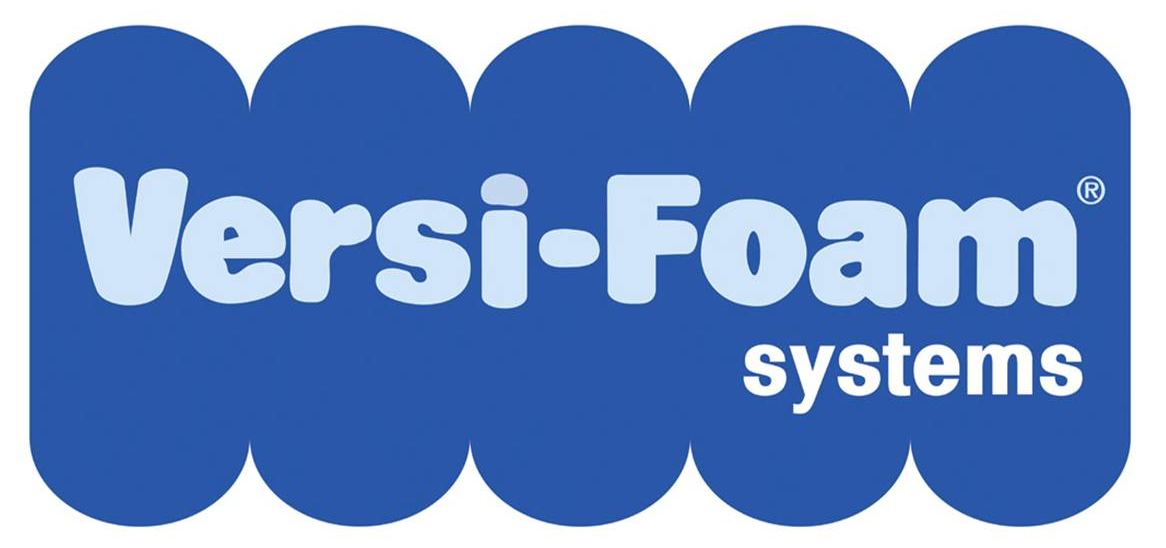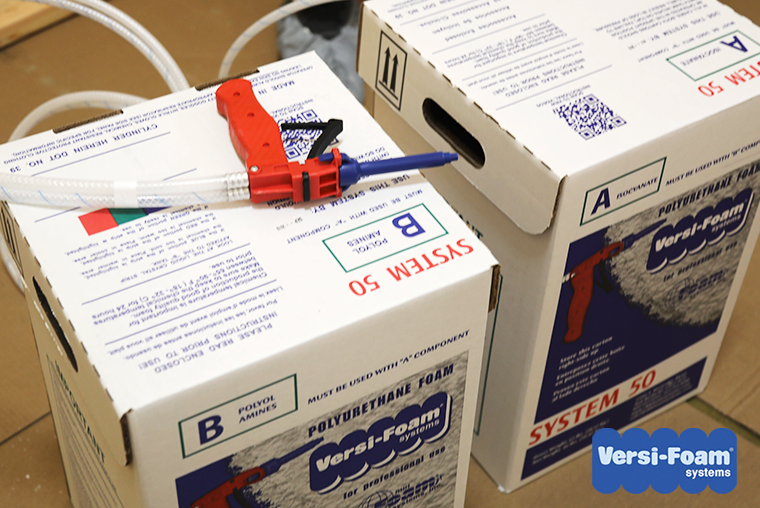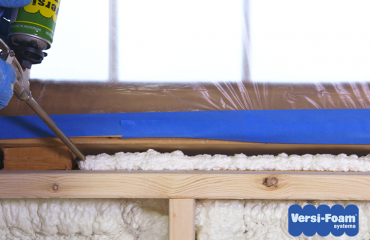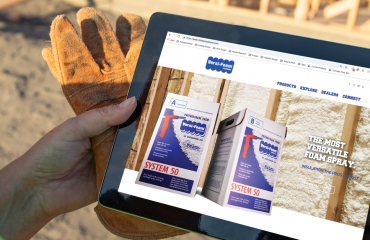As a manufacturer of spray polyurethane foam (SPF), Versi-Foam® must adhere to the regulations put in place by the Occupational Safety and Health Administration (OSHA). We make sure all of our customers are aware of what using spray foam insulation entails and how to do so safely, and we promise to always keep you up-to-date on the latest rules and regulations, such as the newly implemented state phase-down of hydrofluorocarbons.
1. Hazard Communication
Before you use any kind of spray foam insulation product, it’s important to understand the potential risks of using this type of material. On the Versi-Foam® website, you can find an SDS on each product, which is available in both English and Spanish. You’ll find a list of warnings to avoid inhalation and any contact with your skin or eyes.
2. Respiratory Protection
When you are spraying foam insulation, you must have respiratory protection to prevent exposure to any potential hazards. There are different types of respiratory protection, often simply referred to as respirators, available depending on the type of product being used or airborne concern at hand.
3. Personal Protective Equipment (PPE)
Respiratory protection is only one type of personal protective equipment (PPE). Most often, PPE is used to prevent injuries or illnesses that can occur in the workplace. If PPE is required, such as when working with spray insulation, you must always be provided with the following information:
- When it’s necessary
- What kind is necessary
- How to properly put it on, adjust, wear, and take it off
- Limitations of the equipment
- Proper care, maintenance, useful life, and disposal of the equipment
You can find all of this information in the aforementioned SDS for each product.
4. Free Consultation Program
While less applicable for residential use, OSHA will provide a free consultation for both small and large businesses across the U.S. so employees can easily find out whether there are any workplace hazards they should be aware of. These on-site consultations also allow businesses, like worksites for commercial projects, to learn and improve without the risk of receiving a citation.
As stated on the OSHA website, “consultants from state agencies or universities work with employers to identify workplace hazards, provide advice for compliance with OSHA standards, and assist in establishing and improving safety and health programs,” performing “over 26,000 visits to small business worksites covering approximately 1 million workers across the nation.”
5. State Phase-Down of Climate-Damaging Hydrofluorocarbons
In May 2021, the U.S. Environmental Protection Agency (EPA) announced that it would be “proposing its first rule [to] phase down the production and consumption of hydrofluorocarbons (HFCs), highly potent greenhouse gases commonly used in refrigerators, air conditioners, and many other applications.”
The final rule of the new regulation under the American Innovation and Manufacturing (AIM) Act sets baseline levels for HFC production and consumption, from which reductions will occur. This “establishes an initial methodology for allocating and trading HFC allowances for 2022 and 2023, and creates a robust, agile, and innovative compliance and enforcement system,” as stated by the EPA.
Before the official ruling took hold, some states already ruled to stop the manufacturing and use of products containing HFCs, including spray foam insulation. These states include California, Colorado, Hawaii, Maine, Massachusetts, New Jersey, New York, Vermont, and Washington. As such, Versi-Foam® created a new formula that uses hydrofluoroolefins (HFOs), a blowing agent that has a lower global warming potential (GWP).
While the cost to manufacture this material is higher, its price should come down over time as more states put into place this new regulation and more companies begin to produce HFOs. Be sure to check your local regulations to make sure you order the right product for your area. No matter where you live, Versi-Foam®’s environmentally-friendly products are energy-efficient, LEED-certified, and readily available to you.





